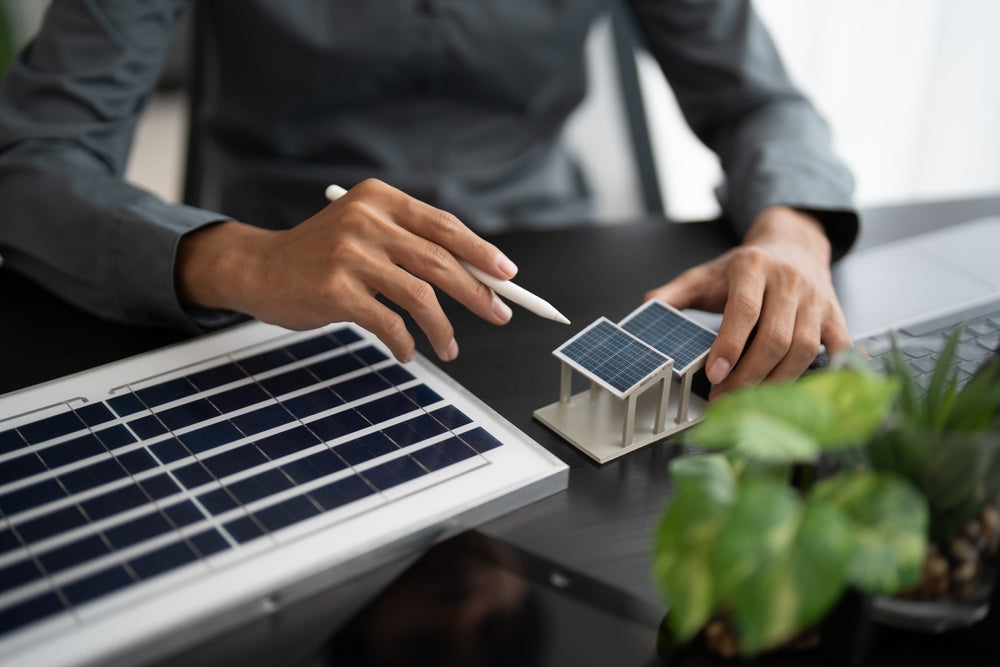
Rethinking Solar Choices in a Bright New World
As solar energy gains traction worldwide, more homeowners, businesses, and industries are exploring different types of solar panels to power their spaces sustainably. With rising demand comes innovation, and today, there are more options than ever before. But one question continues to surface — should you go with bifacial or monofacial solar panels?
To answer this, we need to look beyond just the surface-level differences. While both panel types are designed to harness sunlight and convert it into usable electricity, they differ in structure, efficiency, application, and long-term value. In this post, we’ll break down the key differences between bifacial and monofacial solar panels, using a friendly, easy-to-understand approach that helps you make an informed decision.
Understanding the Basics: One Side or Two?
Let’s begin with a quick definition of the two technologies. Monofacial solar panels are the traditional panels you’ve seen on rooftops and solar farms for years. They absorb sunlight only from the front side, converting it into electricity through photovoltaic (PV) cells.
On the other hand, bifacial solar panels take things a step further. These panels are designed to absorb sunlight from both the front and the back sides. The rear side captures reflected light from surfaces like white rooftops, cement floors, sand, or gravel. This added exposure boosts their energy production by 10 to 30 percent, depending on installation conditions.
Brands like Jinko solar panel, astroenergy solar panel, and others have pioneered advanced bifacial solar panel designs that are now widely used in both residential and commercial installations. These high-performing panels offer more power in the same footprint, making them attractive in space-sensitive or high-efficiency applications.
It’s no surprise that the demand for solar panels, bifacial solar panel, Jinko solar panel, astroenergy solar panel continues to rise in regions with abundant sunlight like the Middle East, South Asia, and Africa.
Performance and Efficiency: Which One Delivers More?
One of the biggest selling points for bifacial solar panels is their higher energy output. Thanks to their ability to absorb light from both sides, they can generate more electricity than monofacial panels of the same size. This added efficiency makes them ideal for ground-mounted systems with reflective surfaces beneath.
For instance, a 400-watt monofacial panel might consistently generate that amount under direct sunlight, while a 400-watt bifacial panel in a reflective environment could generate 440 to 480 watts, depending on conditions.
That said, performance also depends on your location, tilt angle, and how the panels are mounted. If the back side of the bifacial panel is shaded or obstructed, the efficiency gains are lost. In contrast, monofacial panels are more forgiving in traditional rooftop settings, where rear-side reflection is minimal.
So, if your installation site offers good albedo (reflective surface), and you have control over panel elevation and orientation, bifacial panels are the way to go. Otherwise, monofacial panels still deliver excellent performance and remain a viable option for residential rooftops and compact spaces.
Cost and Return on Investment (ROI)
Naturally, cost plays a big role in choosing between bifacial and monofacial panels. Initially, bifacial solar panels tend to be more expensive than monofacial ones due to the extra materials (glass on both sides) and enhanced technology.
However, their long-term ROI often outweighs the higher upfront cost. With increased energy production, reduced system degradation, and better temperature performance, bifacial systems can pay for themselves faster in ideal settings.
Monofacial panels, while more budget-friendly at installation, may require more panels or a larger area to match the energy output of a bifacial system. If you’re tight on budget and space isn’t a constraint, monofacial panels could still be the smarter option.
In some cases, government incentives or net metering benefits make the investment in bifacial panels even more attractive. So it's wise to calculate total system output over 25 years rather than just the purchase price.
Durability and Design Considerations
Let’s talk design. Monofacial panels typically use a solid backsheet to seal the PV cells. They’re lighter and often easier to handle, which makes them more popular for rooftop installations where mounting weight matters.
Bifacial panels, by contrast, use glass on both sides. This glass-glass construction not only helps with energy collection but also adds structural integrity. These panels are resistant to harsh weather conditions, including high winds, heavy rain, and sandstorms. Their transparent design also makes them more visually appealing in architectural installations, such as pergolas or carports.
That said, bifacial panels are heavier and may require stronger mounting frames, which could increase installation costs. However, for large-scale solar farms, the benefits in energy yield and longevity often outweigh these concerns.
Best Use Cases: When to Choose Which?
Every project has its own goals and constraints. Let’s break it down:
Go for Bifacial Panels If:
-
You’re installing ground-mounted systems with reflective surfaces.
-
Your project is commercial, industrial, or utility-scale.
-
You want higher output from limited space.
-
You're using high-efficiency panels like Jinko solar panel or astroenergy solar panel.
-
You prioritize long-term gains over short-term savings.
Stick with Monofacial Panels If:
-
You’re installing on a standard residential rooftop.
-
Your budget is limited and space is not a major constraint.
-
There’s little to no reflective surface beneath the panel.
-
You prefer lighter panels for easy handling and installation.
There’s no one-size-fits-all solution. Instead, evaluate your energy needs, space availability, and budget to decide which panel type fits best.
The Role of Brands in Your Decision
Not all panels are built equally. Choosing the right brand can ensure better efficiency, warranty coverage, and long-term performance. Globally trusted names like Jinko solar panel, astroenergy solar panel, and other Tier-1 manufacturers have been at the forefront of innovation in both bifacial and monofacial technologies.
-
Jinko solar panel is known for high-efficiency bifacial modules with excellent low-light performance and heat resistance.
-
Astroenergy solar panel offers affordable yet powerful options, including glass-glass bifacial modules ideal for warm climates.
-
Other brands like Canadian Solar, Trina Solar, and Longi also provide reliable choices for both technologies, often with local support and warranty services in Pakistan and similar regions.
Working with a certified installer ensures that you receive authentic panels and a professional installation that maximizes performance.
Final Thoughts: Two Technologies, One Sustainable Future
The future of solar energy is bright, and both bifacial and monofacial solar panels are playing vital roles in it. While bifacial panels lead the way in energy efficiency and innovation, monofacial panels continue to be the backbone of residential solar due to their simplicity and cost-effectiveness.
Ultimately, your decision should reflect your unique goals, environment, and investment capacity. Whether you’re installing a single home system or planning a large solar farm, understanding the difference between bifacial and monofacial panels helps you get the most out of the sun.








